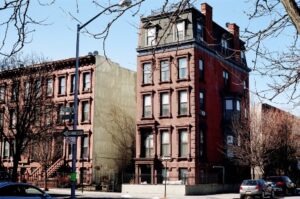Chicago's best property management company, providing tenant screening, rent collection, property marketing, and more at reasonable cost.
Shiller Park Property Management at its best!
Three Pentacles is a trusted property management company in Shiller Park, IL. Managing residential properties, commercial properties, HOA associations, and short-term vacation properties, Three Pentacles works hard to provide you with the customized property management service that works for you.
We Manage All Types of Properties in Shiller Park
About Shiller Park
Schiller Park is a village in Cook County, Illinois, United States. The population was 11,793 at the 2010 census. In early 1800, the Three Fires Nation inhabited the area: the Potawatomi, Ottawa and Ojibwa Indian tribes. In 1810, the Fort Dearborn Massacre involved Alexander Robinson, chief of the Potawatomi tribe, who rescued military personnel taking them to safety at Mackinac Island. In 1820, the Prairie du Chien Treaty deeded to Robinson 1,280 acres on both sides of the river, which would later comprise a large portion of Schiller Park. In 1830, Robinson moved his family to the river. He led a delegation of chiefs to Washington D. C. to plead the cause of the tribes being pushed out of the lake region. Later he along with Billy Caldwell and other chiefs would have the task of escorting the tribes westward. In 1840, John S. Everett bought 105 acres of Robinson land, in the general area of the present location of Irving Park Road and River Road. Ashley Gilbert bought land in what was then referred to as Fairview.

In 1850, immigrants arrived taking up land around Robinson’s Reserve. German farmers were coming to try their luck in the land of promise. In 1860, during the Civil War Robinson’s son David served in the Union Army. Here is an example of a Union soldier. In 1870, the community grew as more and more immigrants primarily of Italian, Polish and Spanish descent arrived. Robinson died in 1872. In 1880, William Kolze came with his family and bought the Everett land. Wisconsin-Central Railroad ‘s first run was in 1886. In 1890, Kolze built his home, a large white house which became a landmark. Railroad strikes reared their heads. It was a time of prosperity for some parts of the area, but life in the Kolze community was quiet and hardworking.
In 1900, statistics listed nine homes, one school, a blacksmith shop and two saloons. Mud roads, backyard pumps, outhouses, gardens and various animals also made up the community. In 1910, population of the village was 258 (180 were children). During this era movies featuring Tom Mix, the Farnums and others were made along the Des Plaines River.
Village of Schiller Park incorporated in 1914 1920: Prohibition, the Charleston and the flapper era started the decade. Unemployment and the stock market crash brought the onset of hard times at the end of the decade. In 1930, depression reared its ugly head. Population was 700. Julia Marenga Kolze, daughter-in-law of William Kolze, became the first woman mayor of Schiller Park. She was also honored at the World’s Fair as the first female mayor of Illinois. In 1940, during the war years men were taken into service. Our population was 800. In 1950, the post-war boom; by the mid 50’s our population reached 5,000. New homes and businesses were built. In 1960, Fairview, Frogtown, and the Indian Park subdivision were annexed. The Tollway and O’Hare Airport were constructed. Population reached 8,600. In 1970, three public schools, two Catholic schools and numerous churches sprang up. Organizations such as Scouts, Sertoma, Legions and others flourished. Public School – Lincoln Middle. In 1980, the O’Hare expansion continued. Population leveled off at 11,000. In 1990, home rule was established for the village. The Memorial Wall for veterans was erected. Trees killed by Dutch Elm disease in the 1960’s began to be replaced with young plantings. Plans for Metra Station and Senior Housing projects were established. In 2000, senior housing project was completed, and first residents moved in. Metra Station construction began.
We understand the ins and outs of local real estate
Need Help? Inquire About Our Management Services Here
Are you maximizing your rental property’s potential?




